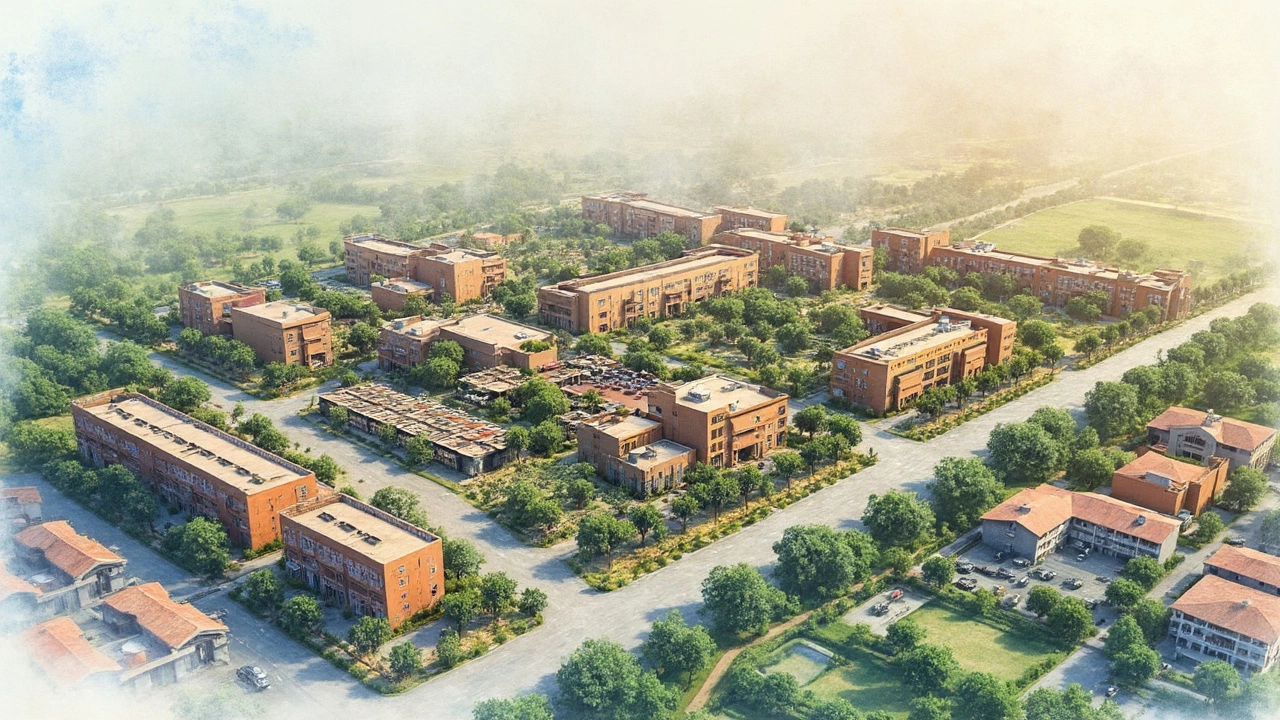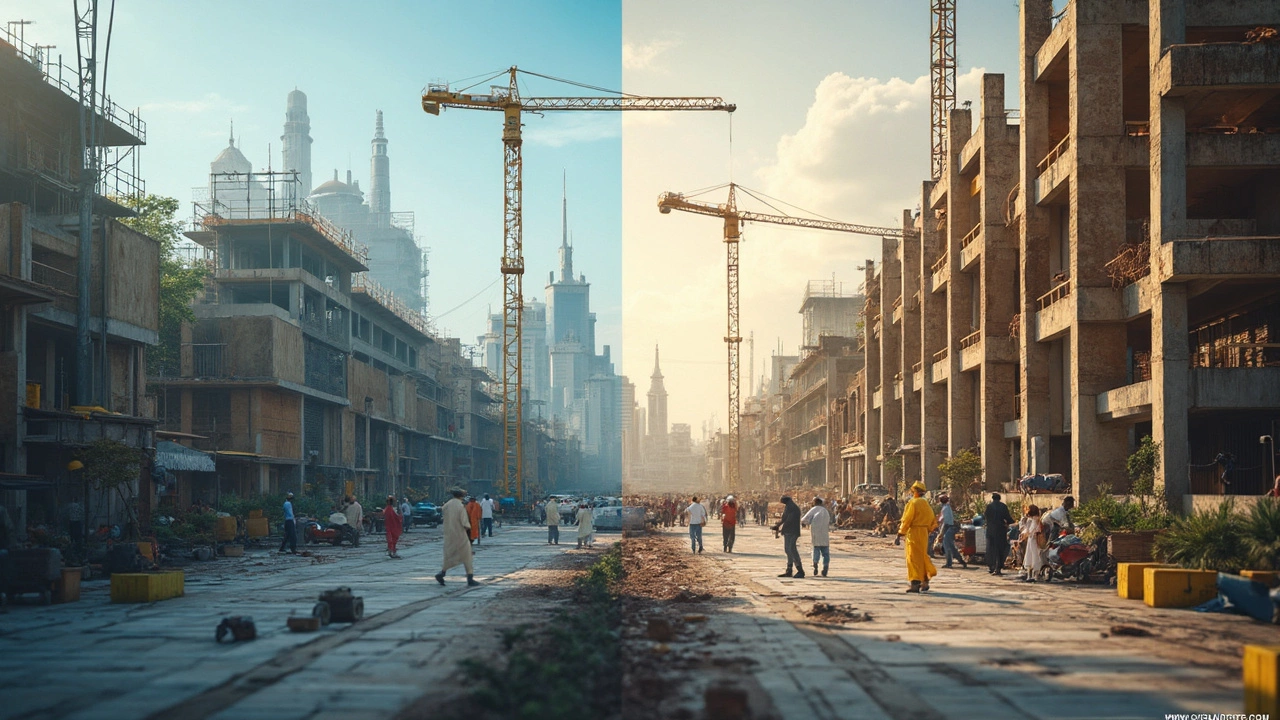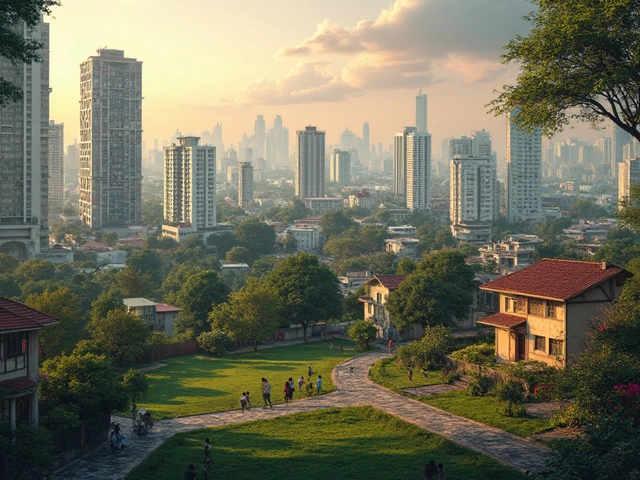In the world of construction, understanding the difference between commercial and non-commercial projects isn't just for industry insiders—it's something anyone involved in property development or investment should grasp. Commercial construction primarily revolves around buildings used for business, like offices, shops, and factories. These projects often require complex planning and compliance with specific regulations due to their higher foot traffic and robust operational needs.
On the flip side, non-commercial construction is more aligned with residential or public use. Think of homes, schools, and community centers. While these projects might seem straightforward, they come with their own sets of considerations, especially in terms of zoning laws and community engagement. Whether you're investing in real estate or simply curious about how your city planning works, knowing the basics of these construction types can guide better decision-making.
- What Defines Commercial Construction?
- Key Differences and Legal Aspects
- Financial Implications
- Impact on Urban Planning
- Practical Examples and Case Studies
What Defines Commercial Construction?
The term commercial construction might seem straightforward, but it's a world with its own complexities and nuances. Essentially, it refers to any building project that focuses on spaces people use for business. This can include shopping centers, office buildings, hotels, and warehouses. Now, each of these structures plays a vital role in the local economy and requires its own unique set of requirements during the construction process.
Commercial construction is often governed by strict rules and building codes. Why? Well, these spaces are meant for high usage and need to accommodate many people safely and efficiently. For instance, think of fire escapes in office buildings or large structural beams in a factory—both are essential for safety and functionality.
Types of Commercial Buildings
When we talk about types of commercial buildings, here's a short list to give you an idea:
- Office Buildings
- Retail Spaces like Malls and Boutiques
- Hospitality Buildings like Hotels and Restaurants
- Industrial Buildings, including Factories and Warehouses
Real estate investors often find commercial construction attractive because of the potential for high returns. These properties are typically leased for longer periods, providing a steady income stream. Plus, businesses in bustling areas are always on the lookout for prime locations.
As for some facts, did you know that, on average, commercial buildings last about 50-60 years before they require major renovations or replacements? How well they stand the test of time depends on the materials used and the frequency of maintenance.
Overall, commercial construction is integral to urban development. It's all about building spaces that sustain business growth, cater to consumer needs, and are safe for everyone involved.
Key Differences and Legal Aspects
When it comes to commercial construction, there are specific distinctions that set it apart from non-commercial projects. The legal framework alone can be a massive differentiator. For instance, commercial properties often need to comply with more stringent building codes and standards, given the higher levels of foot traffic and the various safety regulations in place to protect the public.
Building Codes and Safety Regulations
Commercial structures must adhere to codes that dictate everything from fire safety measures to structural integrity standards. This can affect the choice of materials, design aspects, and even the technology incorporated into the building. As a rule, commercial buildings require periodic inspections to ensure ongoing compliance.
Edgar Smith, a well-known consultant in the construction law field, mentions,
"Commercial construction is like playing chess. The rules are strict, and a single misstep can have costly consequences."
Zoning Laws
Can't ignore zoning laws when thinking about the differences between commercial and non-commercial areas. Zoning defines what can be built where. Usually, commercial properties are located in areas that are specifically zoned for business purposes, which inherently comes with fewer residential-type restrictions.
Financial Implications
Fundamentally, commercial projects can be larger in scope and budget, demanding more in terms of investment. They often involve longer timelines and can carry significant financial risk. However, the payoff can be substantial due to the business opportunities they create.
Contractual Agreements
Lastly, the contracts involved in commercial construction are usually more complex. They often require specialized knowledge of various financial, legal, and technical elements. Therefore, it's pretty common for companies to hire dedicated contract managers to navigate these waters.
In summary, understanding these legal aspects and differences is crucial for anyone venturing into commercial construction. From codes to zoning, every detail impacts the project's overall feasibility and success.

Financial Implications
Diving into the finances of commercial construction versus non-commercial construction reveals some significant differences that impact budgeting, funding, and overall profitability. For starters, commercial projects often involve substantially higher upfront costs. These are due to the scale of the buildings and the specialized materials and technologies involved. Think about skyscrapers with their need for high-tech infrastructure and safety regulations—all adding to the price tag.
On the flip side, non-commercial construction, like residential housing, might have lower initial costs but they can also fluctuate based on market demand and regional development plans. Financing for non-commercial projects tends to be more accessible, as these projects are seen as less risky, providing more stable long-term returns.
Funding Sources and Strategies
Commercial projects typically require diverse funding sources. It's common for developers to lean on a mix of private investors, business loans, and sometimes even crowdfunding. Commercial construction is attractive to investors because they promise potentially high returns, thanks to income from leases or direct business operations within the completed structures.
For non-commercial projects, funding often comes from personal savings, mortgages, or government grants, particularly for public-serving constructions like schools or hospitals. These funding strategies tend to prioritize longevity and sustainability, focusing on community impact over quick financial returns.
Impact on Profit Margins
In terms of profit margins, commercial versus non-commercial projects can differ widely. Commercial developments are designed to generate revenue, whether through rental income or business operations. That means the focus is on a higher return on investment (ROI), which usually aligns with the financial motivations of stakeholders.
Non-commercial projects might not bring immediate profit but add to societal value, ticking financial benefits over time. Residential properties get their worth through appreciation in property value and can eventually yield a solid profit if sold.
| Project Type | Initial Cost (in millions) | Average ROI (%) |
|---|---|---|
| Commercial | $10-50 | 10-15% |
| Non-Commercial | $1-10 | 3-5% |
While both types of construction can benefit from strategic financial planning and resource management, understanding their unique financial landscapes can aid developers in choosing the right forms of investment and determining realistic revenue goals.
Impact on Urban Planning
When it comes to urban planning, commercial construction and non-commercial development play huge roles in shaping city landscapes. The requirements and impact of these projects vary greatly, influencing how cities operate and evolve.
Commercial structures, such as office buildings and shopping centers, often become the economic hubs of a city. They require specific infrastructure, roads, utilities, and public transportation access to support increased traffic. Urban planners must account for these needs, which can drive significant changes in zoning laws and regional planning strategies. In downtown Calgary, for instance, commercial construction has boosted both economic activity and prompted upgrades to public transport systems.
Residential Needs and Community Spaces
Meanwhile, non-commercial construction, like residential buildings and community facilities, is critical for sustaining quality of life. Urban planners focus on ensuring these areas are livable, with green spaces, schools, and healthcare facilities nearby. Non-commercial projects must harmonize with their surroundings to foster cohesive community growth. Recent developments in suburban areas have highlighted the demand for integrated living spaces, where people can live, work, and play without lengthy commutes.
Interestingly, statistics show that a balanced approach to planning, mixing commercial and non-commercial constructions, leads to healthier urban environments. For example, cities prioritizing mixed-use developments are seeing lower carbon footprints and better economic resilience.
Challenges and Opportunities
Balancing needs for both types of construction is no easy feat. Urban planners face challenges like land scarcity, environmental concerns, and shifting demographics. However, these challenges also offer opportunities for innovation. Smart city technology, sustainable construction practices, and adaptive planning are becoming key strategies to manage urban growth effectively.

Practical Examples and Case Studies
To see how commercial construction differs from non-commercial, let's look at some real-world examples that shed light on these concepts. In Calgary, one notable project that defines commercial development is the construction of the Brookfield Place, the tallest building in Western Canada. This commercial space required significant planning and resources, from obtaining permits to adhering to safety standards—which all add up in complexity and cost.
Meanwhile, a striking example of non-commercial construction in the same city is the redevelopment of the New Central Library. This project was more about enhancing community accessibility and education rather than business operations. Here, the focus was on creating a welcoming space that meets local needs while adhering to a more community-focused set of standards.
Case Study: The South Health Campus
This massive facility stands as a perfect blend of the commercial and non-commercial worlds. On one hand, it's a healthcare hub, representing a significant public service investment. On the other, it operates with a business-like organization due to its size and service offerings. The campus integrates community elements while functioning under commercial efficiency standards, showcasing a hybrid approach.
Lessons from the Field
There are several takeaways from these examples:
- Commercial projects require extensive coordination and often prioritize infrastructure and technology investments.
- Non-commercial initiatives need a strong community focus, encouraging spaces that benefit residential life and public engagement.
- Finding a balance, as seen in the South Health Campus, can lead to successful, sustainable developments that serve multiple interests effectively.
Seeing projects through the lens of their commercial or non-commercial nature helps in making the right choices, whether you're planning a new building or contemplating an investment. It's about aligning your goals with the specific needs and regulations these projects require.


